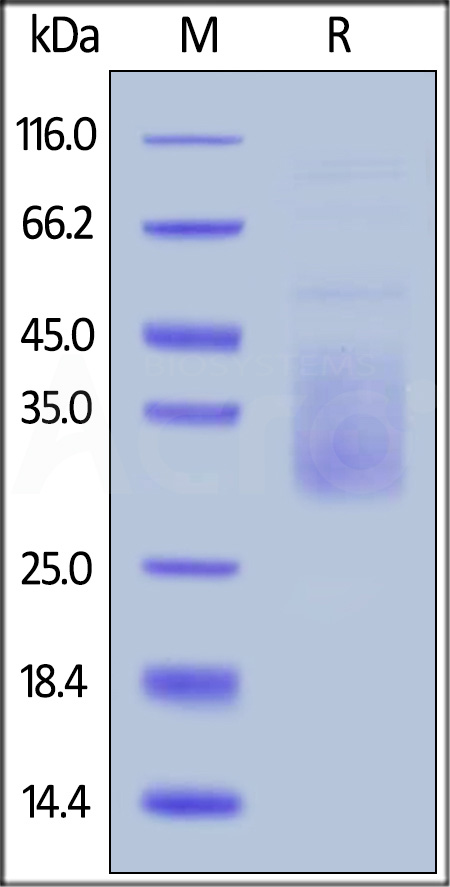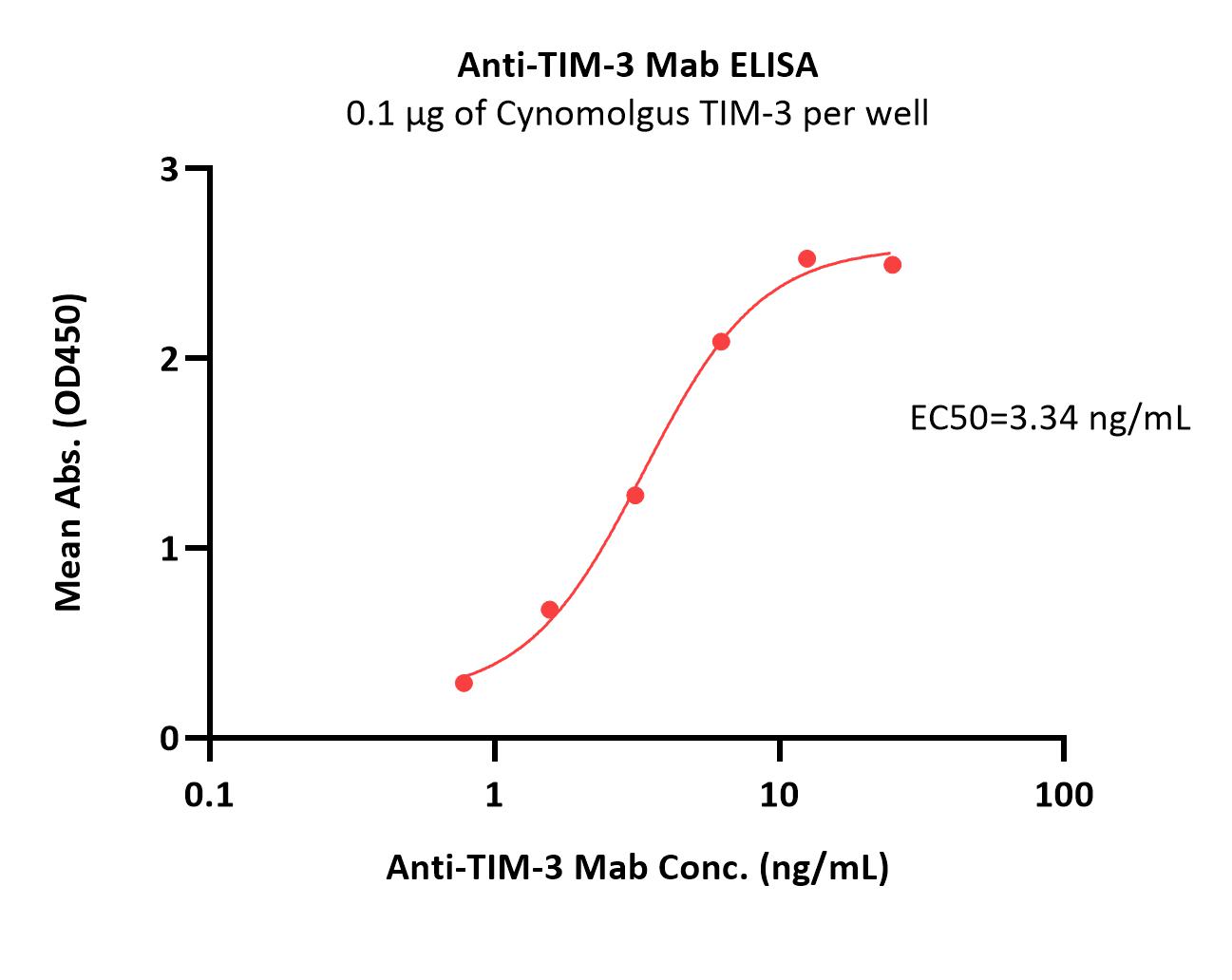分子别名(Synonym)
HAVCR2,TIM3,TIMD3,FLJ14428,KIM3
表达区间及表达系统(Source)
Cynomolgus TIM-3, His Tag (TI3-C52H4) is expressed from human 293 cells (HEK293). It contains AA Ser 22 - Arg 201 (Accession # EHH54703.1).
Predicted N-terminus: Ser 22
Request for sequence
蛋白结构(Molecular Characterization)

This protein carries a polyhistidine tag at the C-terminus.
The protein has a calculated MW of 21.6 kDa. The protein migrates as 30-45 kDa under reducing (R) condition (SDS-PAGE) due to glycosylation.
内毒素(Endotoxin)
Less than 1.0 EU per μg by the LAL method.
纯度(Purity)
>90% as determined by SDS-PAGE.
制剂(Formulation)
Lyophilized from 0.22 μm filtered solution in PBS, pH7.4 with trehalose as protectant.
Contact us for customized product form or formulation.
重构方法(Reconstitution)
Please see Certificate of Analysis for specific instructions.
For best performance, we strongly recommend you to follow the reconstitution protocol provided in the CoA.
存储(Storage)
For long term storage, the product should be stored at lyophilized state at -20°C or lower.
Please avoid repeated freeze-thaw cycles.
This product is stable after storage at:
- -20°C to -70°C for 12 months in lyophilized state;
- -70°C for 3 months under sterile conditions after reconstitution.
电泳(SDS-PAGE)

Cynomolgus TIM-3, His Tag on SDS-PAGE under reducing (R) condition. The gel was stained with Coomassie Blue. The purity of the protein is greater than 90%.
活性(Bioactivity)-ELISA

Immobilized Cynomolgus TIM-3, His Tag (Cat. No. TI3-C52H4) at 1 μg/mL (100 μL/well) can bind Anti-TIM-3 MAb with a linear range of 0.8-6 ng/mL (QC tested).
Protocol
背景(Background)
Hepatitis A virus cellular receptor 2 is also known as HAVCR2, FLJ14428, KIM3, TIM3, TIMD3, is a member of the TIM family of immune regulating molecules with one Ig-like V-type domain and a Ser/Thr-rich mucin stalk. CD4-positive T helper lymphocytes can be divided into types 1 (Th1) and 2 (Th2) on the basis of their cytokine secretion patterns. Th1 cells and their associated cytokines are involved in cell-mediated immunity to intracellular pathogens and delayed-type hypersensitivity reactions, whereas Th2 cells are involved in the control of extracellular helminthic infections and the promotion of atopic and allergic diseases. The 2 types of cells also cross-regulate the functions of the other. HAVCR2 is a Th1-specific cell surface protein that regulates macrophage activation and enhances the severity of experimental autoimmune encephalomyelitis in mice. HAVCR2 regulates macrophage activation. Inhibits T-helper type 1 lymphocyte (Th1)-mediated auto- and alloimmune responses and promotes immunological tolerance. May be also involved in T-cell homing. Dysregulation of the HAVCR2-galectin-9 pathway could underlie chronic autoimmune disease states in human, such as multiple sclerosis.























































 膜杰作
膜杰作 Star Staining
Star Staining












